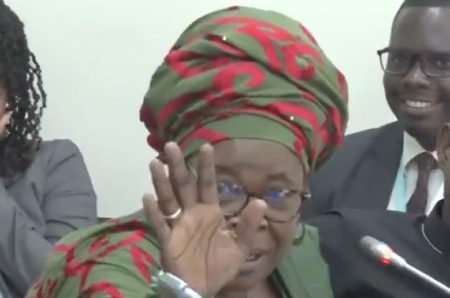The destoolment of Nana Kusi Baaye II, the former chief of Ohwim, by the Asantehene, Otumfuo Osei Tutu II, marks a significant event in the annals of Ashanti traditional governance. After a 16-year reign, Nana Kusi Baaye II was stripped of his chieftaincy title on Monday, February 24, 2025, following a meeting of the Kumasi Traditional Council. The charges brought against him were severe, ranging from violations of the Asantehene’s Great Oath and illegal land sales to extortion and complicity in illegal mining activities, all of which painted a picture of a leader who had allegedly betrayed the trust placed in him by his community and the Asantehene. This incident underscores the importance of accountability and integrity within traditional leadership structures and the Asantehene’s unwavering commitment to upholding the sanctity of the Golden Stool and the customs it represents.
The proceedings that led to Nana Kusi Baaye II’s destoolment were marked by compelling testimonies, particularly from members of his own family. Their accounts painted a troubling portrait of a chief who allegedly abused his authority for personal enrichment. They accused him of misappropriating family lands under the false pretense of acting on behalf of the Asantehene and subsequently allocating portions of these lands for illegal mining operations. These accusations, coming from within his own family, carried significant weight and contributed to the gravity of the charges against him. The willingness of his family members to speak out against him publicly further highlights the depth of their grievances and the extent to which his alleged actions had fractured the familial and communal trust.
The case against Nana Kusi Baaye II initially centered on his invocation of the Asantehene’s Great Oath under false pretenses, a serious offense in Ashanti custom. The Great Oath is a solemn invocation reserved for matters of utmost importance and invoking it falsely is considered a grave transgression. However, as the investigation progressed, further allegations emerged, including accusations of perjury in a chieftaincy dispute and illegal land dealings. The accumulation of these charges painted a picture of a pattern of misconduct and abuse of power, further solidifying the case against him. The expanding scope of the accusations ultimately led to a comprehensive review of his conduct as chief, culminating in his destoolment.
The Asantehene’s decision to destool Nana Kusi Baaye II sends a powerful message about the importance of ethical leadership within the Ashanti kingdom. By holding a chief accountable for his alleged misdeeds, the Asantehene reaffirmed his commitment to upholding the integrity of traditional institutions and the values they represent. The destoolment serves as a stark reminder that traditional leadership positions are not above scrutiny and that those who hold such positions are expected to conduct themselves with the highest levels of integrity and respect for the customs and traditions of the Ashanti people. This action reinforces the principle that leadership comes with responsibility and that those who fail to live up to that responsibility will face consequences.
The accusations against Nana Kusi Baaye II, particularly those related to illegal mining, highlight a broader concern within Ghana regarding the environmental and social impacts of this activity. Illegal mining, often referred to as “galamsey,” has caused widespread environmental devastation, including deforestation, water pollution, and land degradation. The alleged involvement of a traditional leader in such activities underscores the complexity of the issue and the challenges in combating it. The Asantehene’s decisive action in this case could be interpreted as a signal of his commitment to addressing the issue of illegal mining and protecting the environment and the well-being of his people.
Despite the gravity of the accusations and the Asantehene’s ruling, Nana Kusi Baaye II has maintained his innocence, denying any wrongdoing. His denial, however, does not alter the outcome of the traditional council’s decision. The Asantehene’s judgment, based on the evidence presented and the testimonies heard, stands as the final word on the matter. The destoolment of Nana Kusi Baaye II serves as a cautionary tale for those in positions of power and underscores the importance of transparency, accountability, and adherence to the highest ethical standards in traditional leadership. The case also highlights the ongoing challenges faced by traditional authorities in navigating complex issues such as land disputes, illegal mining, and the maintenance of cultural heritage in a rapidly changing world.














